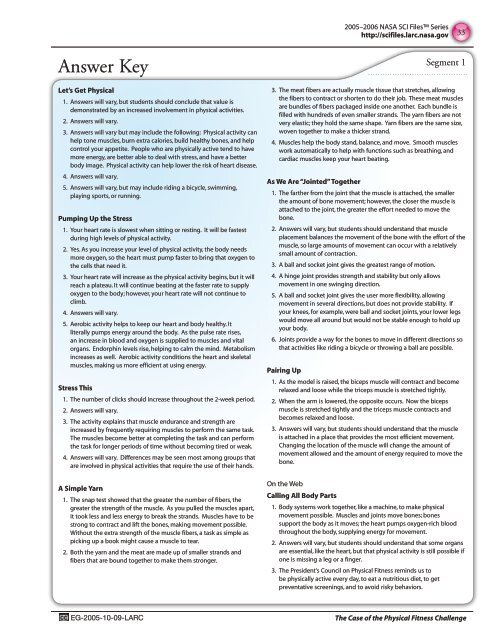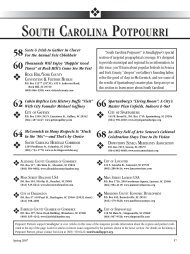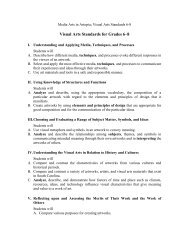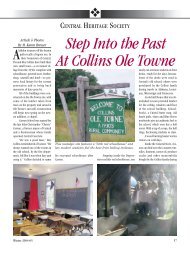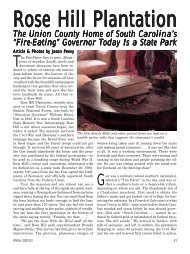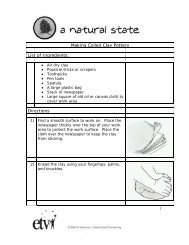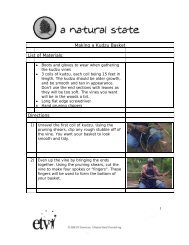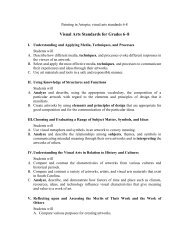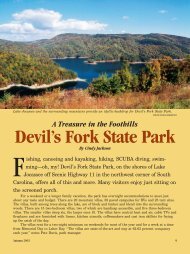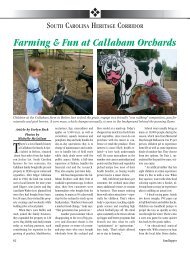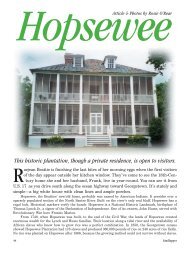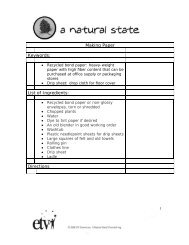The Case Of The Physical Fitness Challenge - Knowitall.org
The Case Of The Physical Fitness Challenge - Knowitall.org
The Case Of The Physical Fitness Challenge - Knowitall.org
You also want an ePaper? Increase the reach of your titles
YUMPU automatically turns print PDFs into web optimized ePapers that Google loves.
Answer Key<br />
Let’s Get <strong>Physical</strong><br />
1. Answers will vary, but students should conclude that value is<br />
demonstrated by an increased involvement in physical activities.<br />
2. Answers will vary.<br />
3. Answers will vary but may include the following: <strong>Physical</strong> activity can<br />
help tone muscles, burn extra calories, build healthy bones, and help<br />
control your appetite. People who are physically active tend to have<br />
more energy, are better able to deal with stress, and have a better<br />
body image. <strong>Physical</strong> activity can help lower the risk of heart disease.<br />
4. Answers will vary.<br />
5. Answers will vary, but may include riding a bicycle, swimming,<br />
playing sports, or running.<br />
Pumping Up the Stress<br />
1. Your heart rate is slowest when sitting or resting. It will be fastest<br />
during high levels of physical activity.<br />
2. Yes. As you increase your level of physical activity, the body needs<br />
more oxygen, so the heart must pump faster to bring that oxygen to<br />
the cells that need it.<br />
3. Your heart rate will increase as the physical activity begins, but it will<br />
reach a plateau. It will continue beating at the faster rate to supply<br />
oxygen to the body; however, your heart rate will not continue to<br />
climb.<br />
4. Answers will vary.<br />
5. Aerobic activity helps to keep our heart and body healthy. It<br />
literally pumps energy around the body. As the pulse rate rises,<br />
an increase in blood and oxygen is supplied to muscles and vital<br />
<strong>org</strong>ans. Endorphin levels rise, helping to calm the mind. Metabolism<br />
increases as well. Aerobic activity conditions the heart and skeletal<br />
muscles, making us more efficient at using energy.<br />
Stress This<br />
1. <strong>The</strong> number of clicks should increase throughout the 2-week period.<br />
2. Answers will vary.<br />
3. <strong>The</strong> activity explains that muscle endurance and strength are<br />
increased by frequently requiring muscles to perform the same task.<br />
<strong>The</strong> muscles become better at completing the task and can perform<br />
the task for longer periods of time without becoming tired or weak.<br />
4. Answers will vary. Differences may be seen most among groups that<br />
are involved in physical activities that require the use of their hands.<br />
A Simple Yarn<br />
1. <strong>The</strong> snap test showed that the greater the number of fibers, the<br />
greater the strength of the muscle. As you pulled the muscles apart,<br />
it took less and less energy to break the strands. Muscles have to be<br />
strong to contract and lift the bones, making movement possible.<br />
Without the extra strength of the muscle fibers, a task as simple as<br />
picking up a book might cause a muscle to tear.<br />
2. Both the yarn and the meat are made up of smaller strands and<br />
fibers that are bound together to make them stronger.<br />
2005–2006 NASA SCI Files Series<br />
http://scifiles.larc.nasa.gov<br />
3. <strong>The</strong> meat fibers are actually muscle tissue that stretches, allowing<br />
the fibers to contract or shorten to do their job. <strong>The</strong>se meat muscles<br />
are bundles of fibers packaged inside one another. Each bundle is<br />
filled with hundreds of even smaller strands. <strong>The</strong> yarn fibers are not<br />
very elastic; they hold the same shape. Yarn fibers are the same size,<br />
woven together to make a thicker strand.<br />
4. Muscles help the body stand, balance, and move. Smooth muscles<br />
work automatically to help with functions such as breathing, and<br />
cardiac muscles keep your heart beating.<br />
As We Are “Jointed” Together<br />
1. <strong>The</strong> farther from the joint that the muscle is attached, the smaller<br />
the amount of bone movement; however, the closer the muscle is<br />
attached to the joint, the greater the effort needed to move the<br />
bone.<br />
EG-2005-10-09-LARC <strong>The</strong> <strong>Case</strong> of the <strong>Physical</strong> <strong>Fitness</strong> <strong>Challenge</strong><br />
33<br />
2. Answers will vary, but students should understand that muscle<br />
placement balances the movement of the bone with the effort of the<br />
muscle, so large amounts of movement can occur with a relatively<br />
small amount of contraction.<br />
3. A ball and socket joint gives the greatest range of motion.<br />
4. A hinge joint provides strength and stability but only allows<br />
movement in one swinging direction.<br />
5. A ball and socket joint gives the user more flexibility, allowing<br />
movement in several directions, but does not provide stability. If<br />
your knees, for example, were ball and socket joints, your lower legs<br />
would move all around but would not be stable enough to hold up<br />
your body.<br />
6. Joints provide a way for the bones to move in different directions so<br />
that activities like riding a bicycle or throwing a ball are possible.<br />
Pairing Up<br />
1. As the model is raised, the biceps muscle will contract and become<br />
relaxed and loose while the triceps muscle is stretched tightly.<br />
2. When the arm is lowered, the opposite occurs. Now the biceps<br />
muscle is stretched tightly and the triceps muscle contracts and<br />
becomes relaxed and loose.<br />
3. Answers will vary, but students should understand that the muscle<br />
is attached in a place that provides the most efficient movement.<br />
Changing the location of the muscle will change the amount of<br />
movement allowed and the amount of energy required to move the<br />
bone.<br />
On the Web<br />
Calling All Body Parts<br />
1. Body systems work together, like a machine, to make physical<br />
movement possible. Muscles and joints move bones; bones<br />
support the body as it moves; the heart pumps oxygen-rich blood<br />
throughout the body, supplying energy for movement.<br />
2. Answers will vary, but students should understand that some <strong>org</strong>ans<br />
are essential, like the heart, but that physical activity is still possible if<br />
one is missing a leg or a finger.<br />
3. <strong>The</strong> President’s Council on <strong>Physical</strong> <strong>Fitness</strong> reminds us to<br />
be physically active every day, to eat a nutritious diet, to get<br />
preventative screenings, and to avoid risky behaviors.<br />
Segment 1


